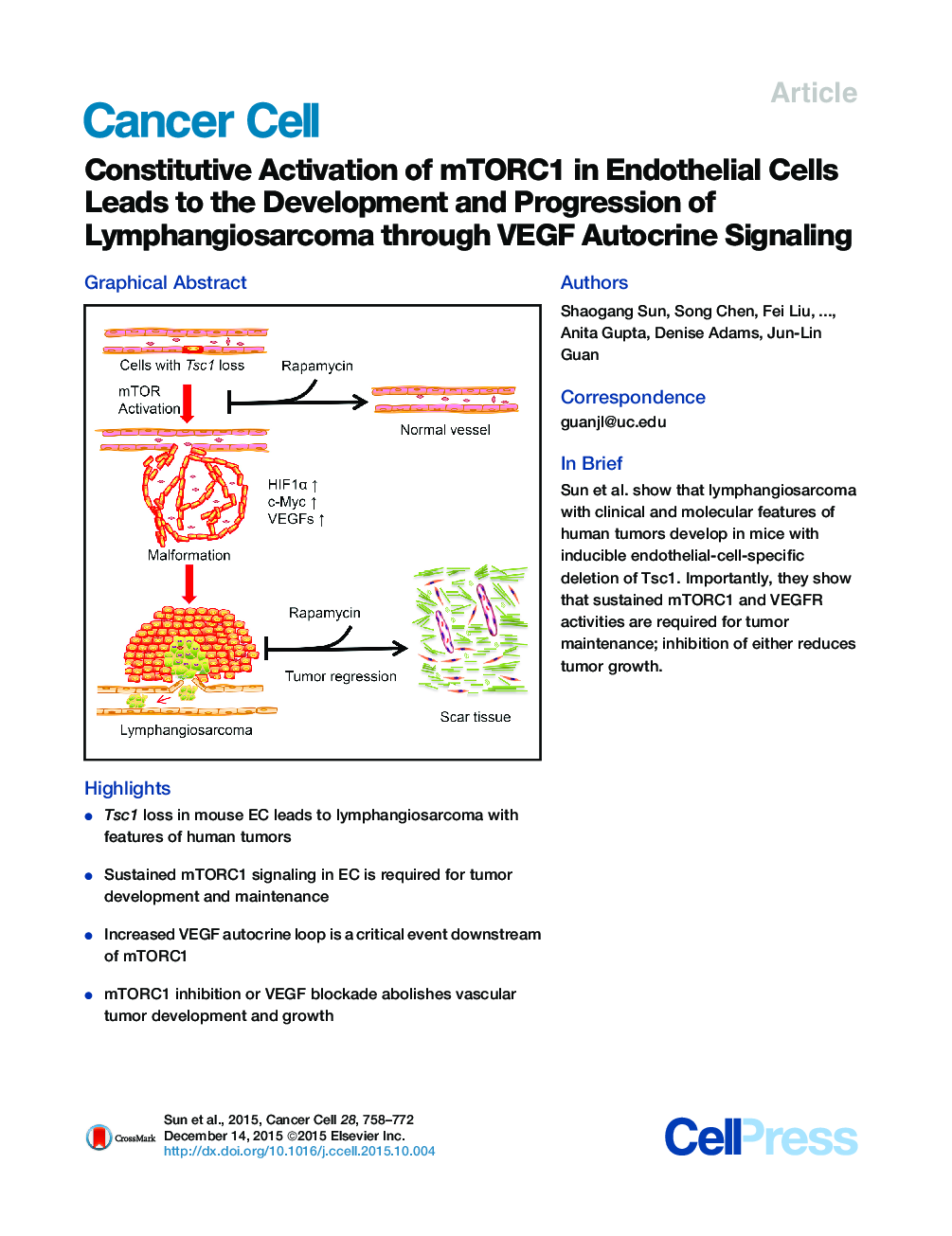| Article ID | Journal | Published Year | Pages | File Type |
|---|---|---|---|---|
| 2107022 | Cancer Cell | 2015 | 15 Pages |
•Tsc1 loss in mouse EC leads to lymphangiosarcoma with features of human tumors•Sustained mTORC1 signaling in EC is required for tumor development and maintenance•Increased VEGF autocrine loop is a critical event downstream of mTORC1•mTORC1 inhibition or VEGF blockade abolishes vascular tumor development and growth
SummaryAngiosarcoma/lymphangiosarcoma is a rare malignancy with poor prognosis. We generated a mouse model with inducible endothelial-cell-specific deletion of Tsc1 to examine mTORC1 signaling in lymphangiosarcoma. Tsc1 loss increased retinal angiogenesis in neonates and led to endothelial proliferative lesions from vascular malformations to vascular tumors in adult mice. Sustained mTORC1 signaling was required for lymphangiosarcoma development and maintenance. Increased VEGF expression in tumor cells was seen, and blocking autocrine VEGF signaling abolished vascular tumor development and growth. We also found significant correlations between mTORC1 activation and VEGF, HIF1α, and c-Myc expression in human angiosarcoma samples. These studies demonstrated critical mechanisms of aberrant mTORC1 activation in lymphangiosarcoma and validate the mice as a valuable model for further study.
Graphical AbstractFigure optionsDownload full-size imageDownload high-quality image (254 K)Download as PowerPoint slide
